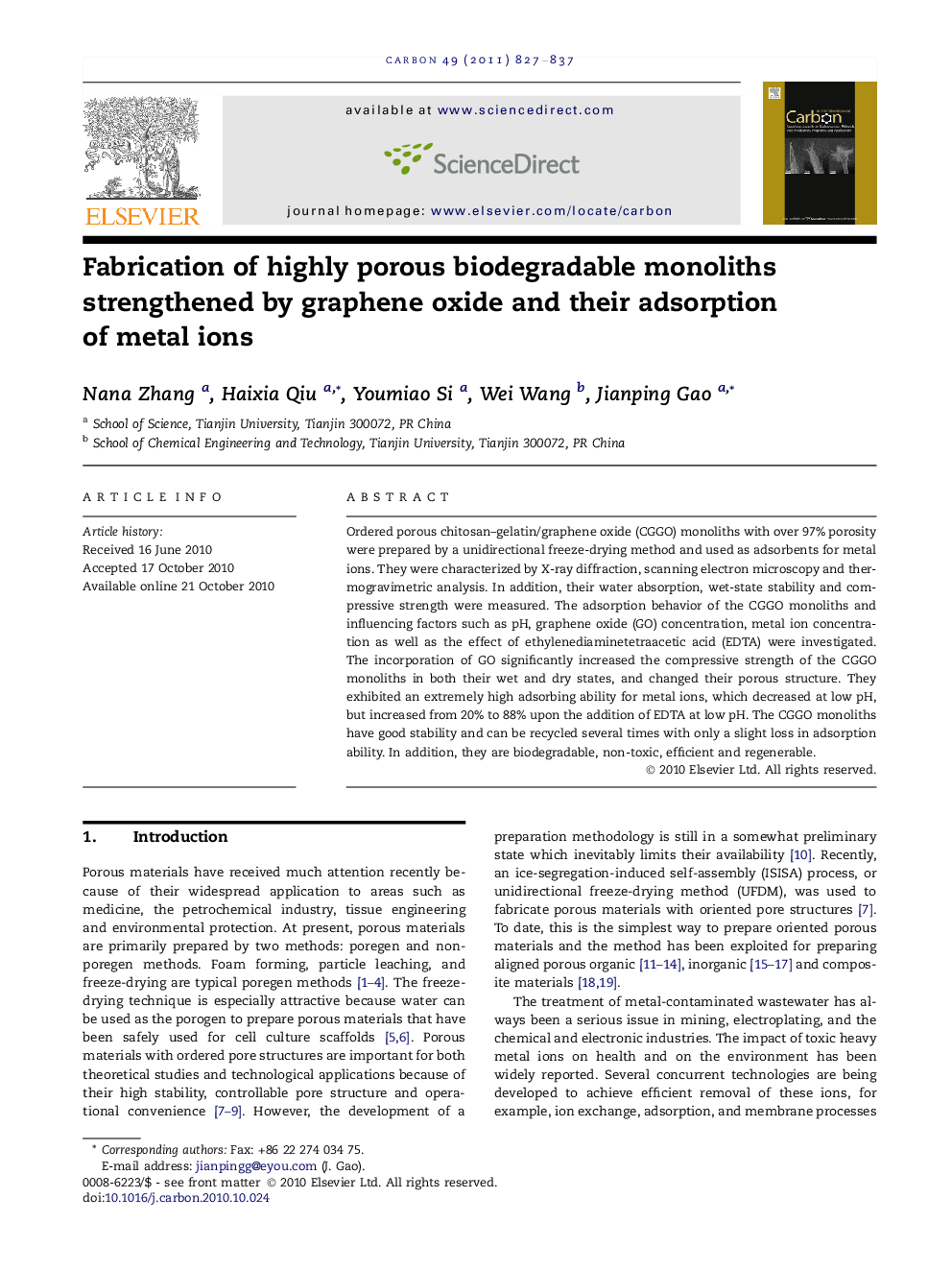| Article ID | Journal | Published Year | Pages | File Type |
|---|---|---|---|---|
| 1416606 | Carbon | 2011 | 11 Pages |
Ordered porous chitosan–gelatin/graphene oxide (CGGO) monoliths with over 97% porosity were prepared by a unidirectional freeze-drying method and used as adsorbents for metal ions. They were characterized by X-ray diffraction, scanning electron microscopy and thermogravimetric analysis. In addition, their water absorption, wet-state stability and compressive strength were measured. The adsorption behavior of the CGGO monoliths and influencing factors such as pH, graphene oxide (GO) concentration, metal ion concentration as well as the effect of ethylenediaminetetraacetic acid (EDTA) were investigated. The incorporation of GO significantly increased the compressive strength of the CGGO monoliths in both their wet and dry states, and changed their porous structure. They exhibited an extremely high adsorbing ability for metal ions, which decreased at low pH, but increased from 20% to 88% upon the addition of EDTA at low pH. The CGGO monoliths have good stability and can be recycled several times with only a slight loss in adsorption ability. In addition, they are biodegradable, non-toxic, efficient and regenerable.
Graphical abstractThe SEM photo (a), wet-state stability (b) and effective adsorption ability for metal ions (c) of porous CGGO monoliths.Figure optionsDownload full-size imageDownload as PowerPoint slideResearch highlights► Ordered porous chitosan–gelatin/graphene oxide (CGGO) monoliths have a very high porosity (over 97%) and good stability which should make them a potentially effective adsorbent for metal ions or other chemicals, such as proteins or DNA macromolecules. And the experimental result has proved which they have an extremely high adsorbing ability for metal ions. ► Chitosan–gelatin/graphene oxide monoliths have a very high porosity (over 97%). ► They show high mechanical strength and good stability in aqueous solutions. ► They exhibit an extremely high adsorbing ability for metal ions. ► They can be recycled several times with only a slight loss in adsorption ability.
